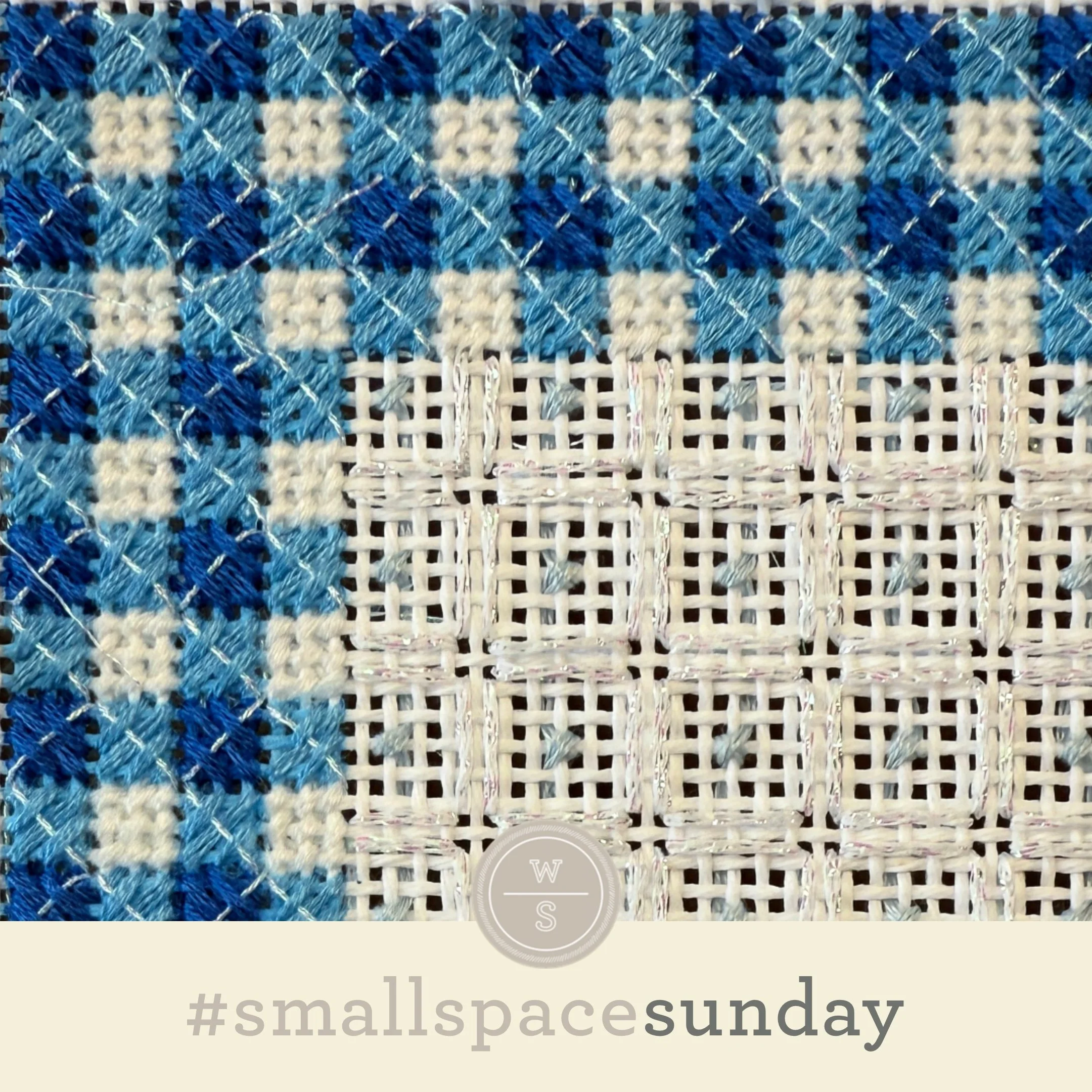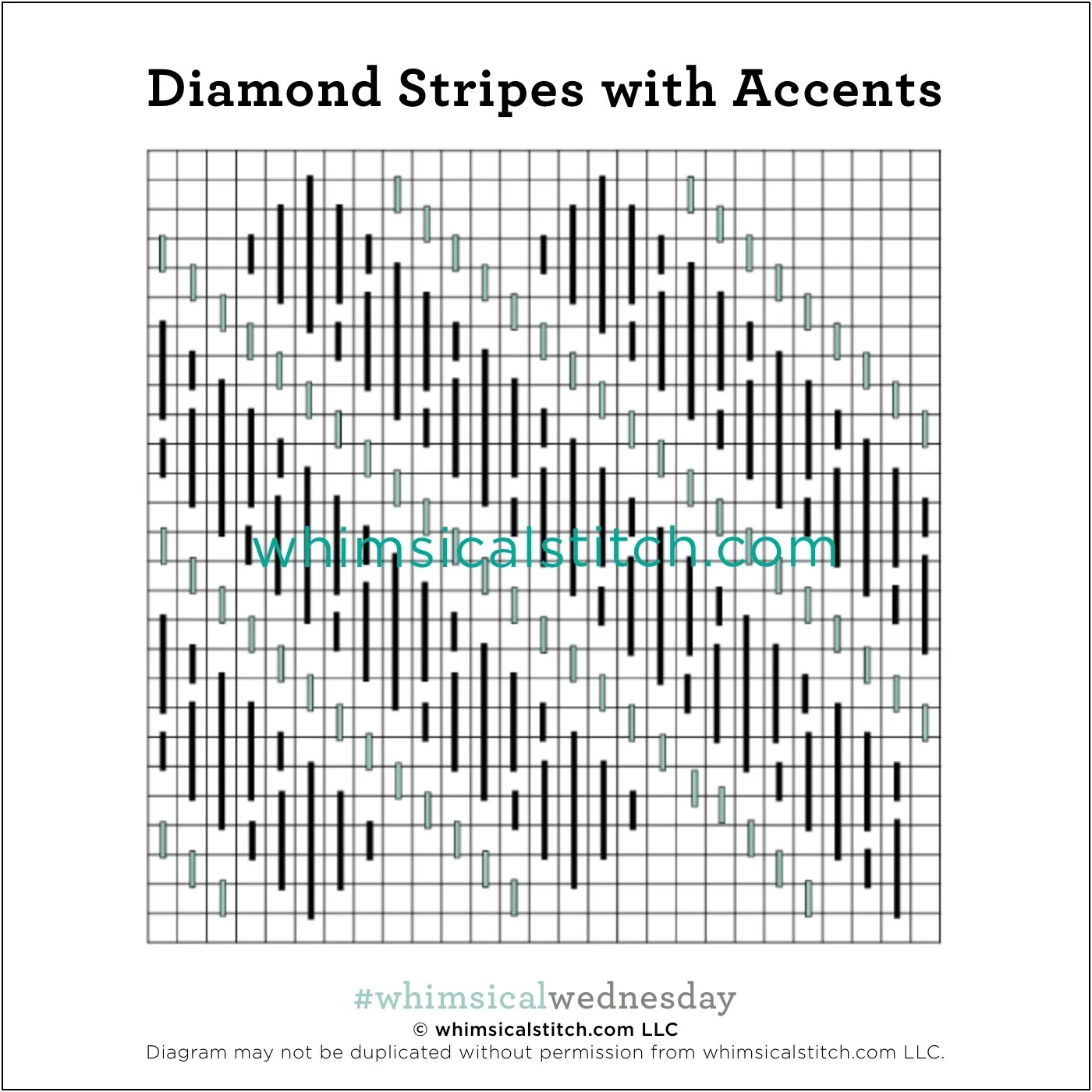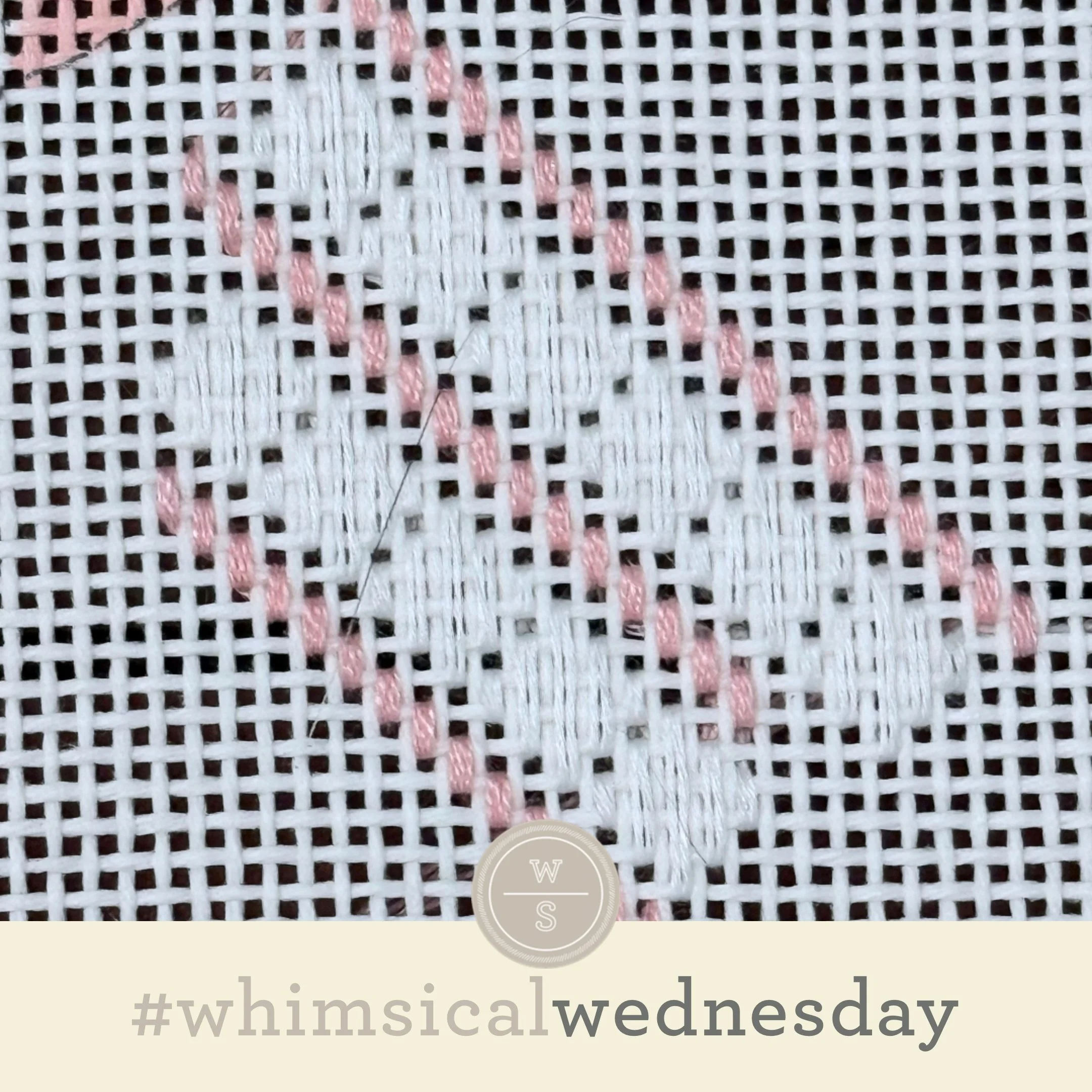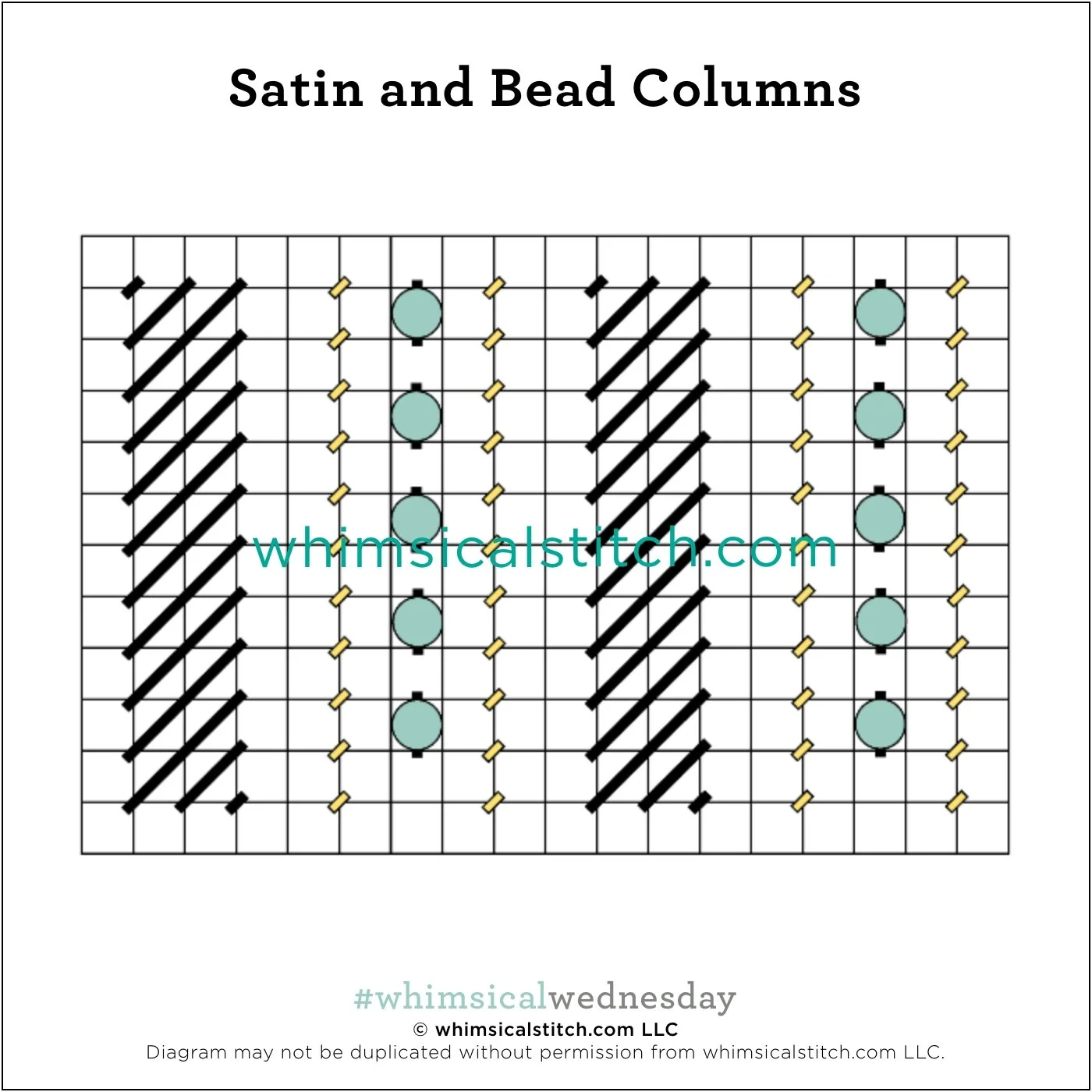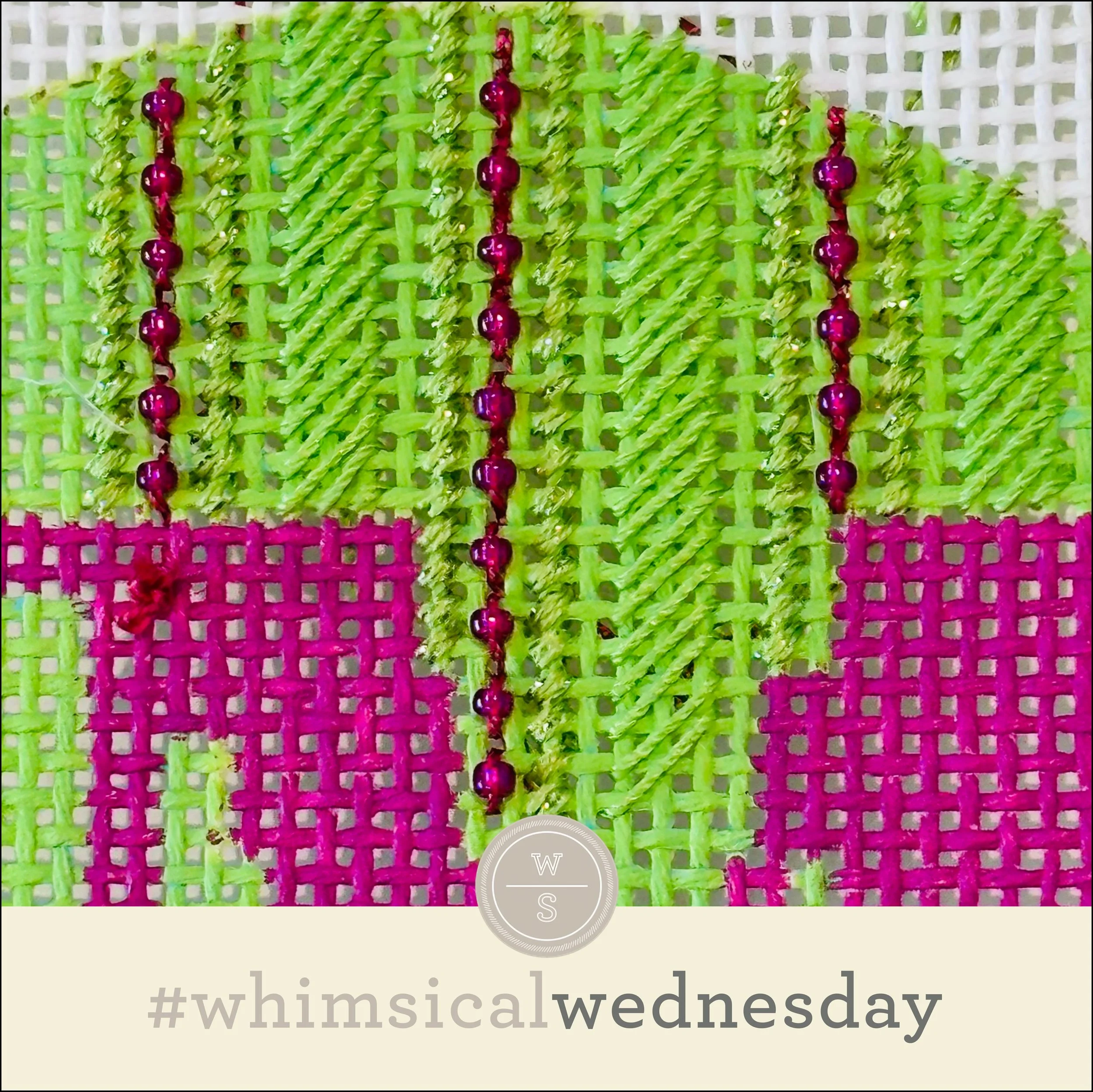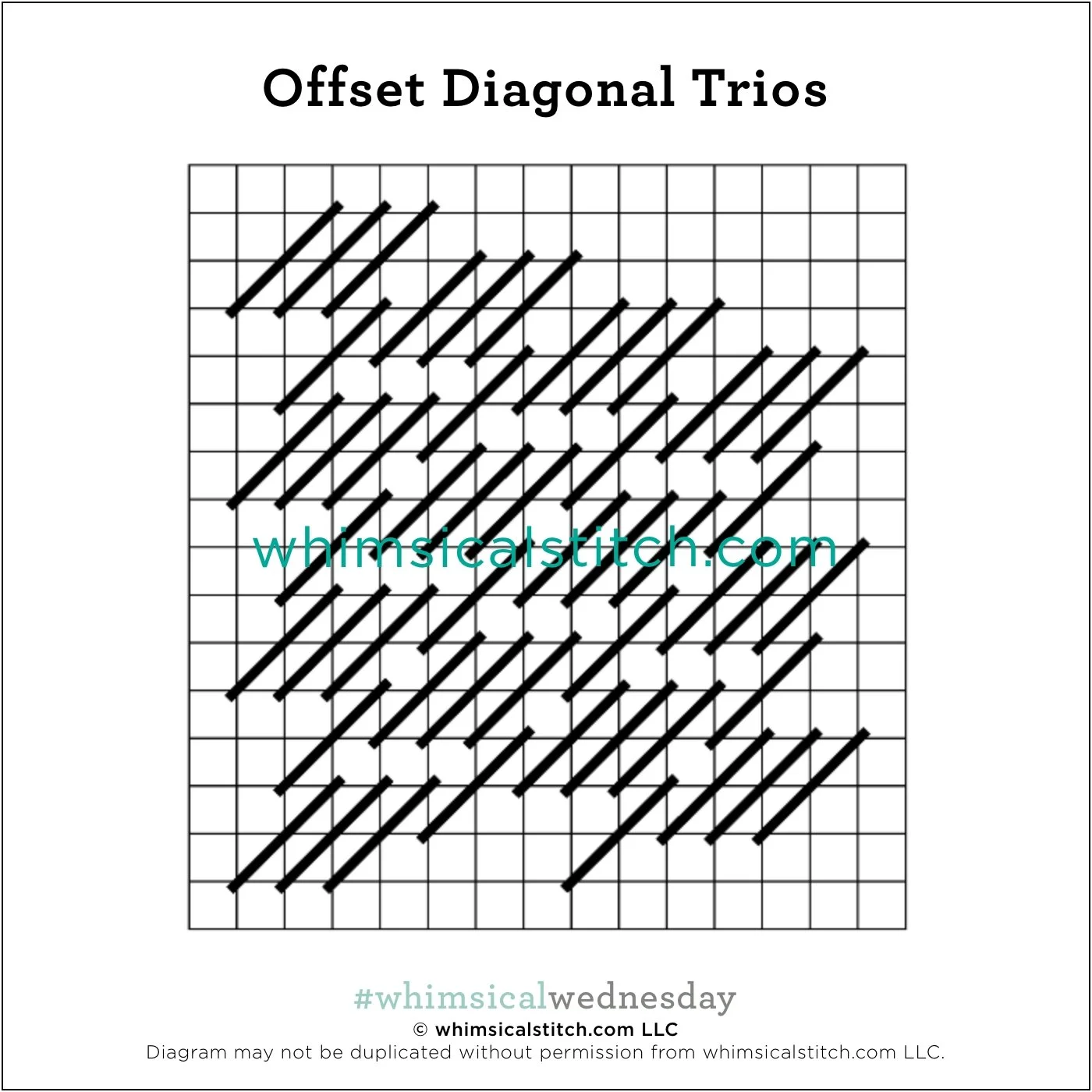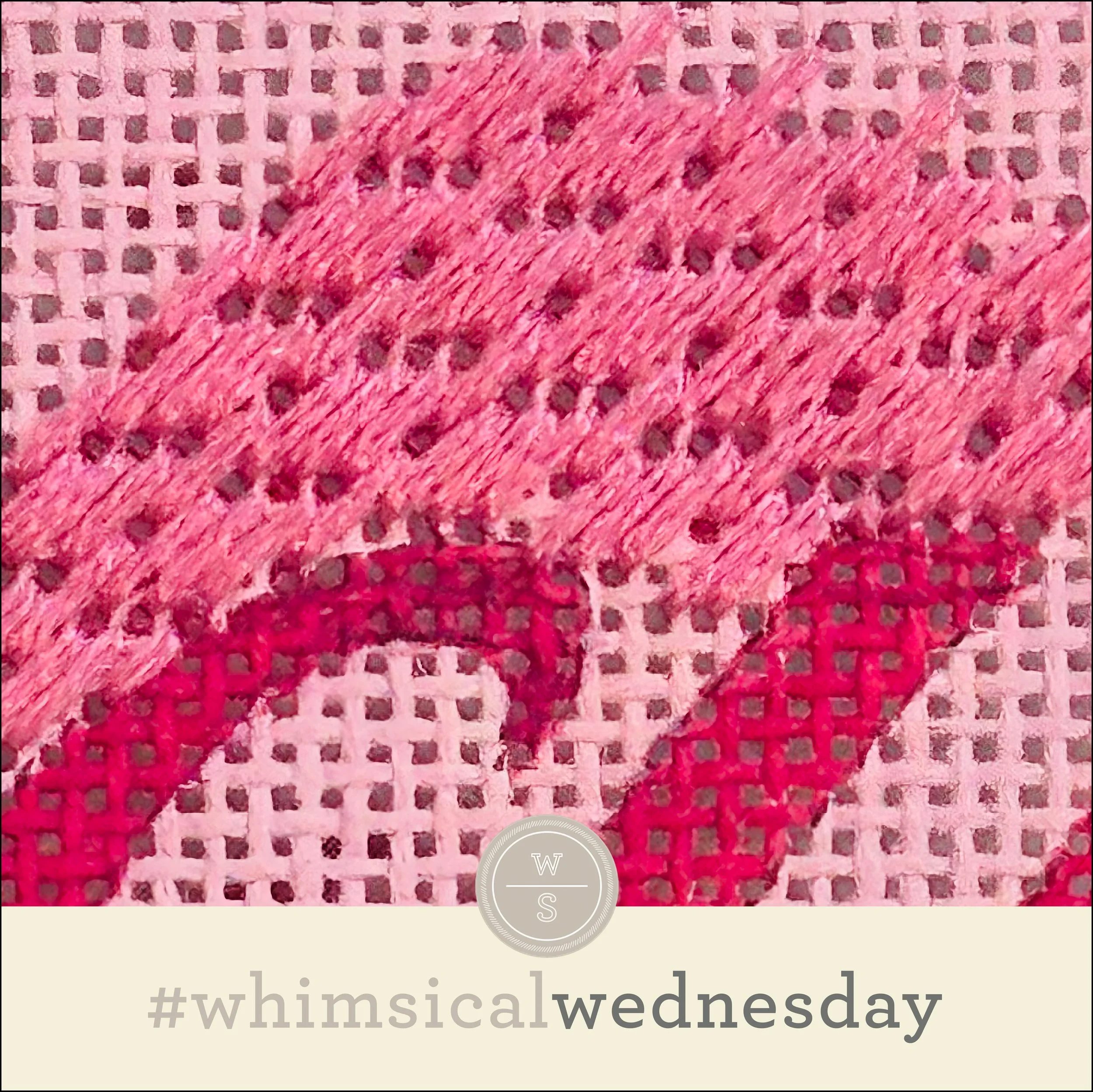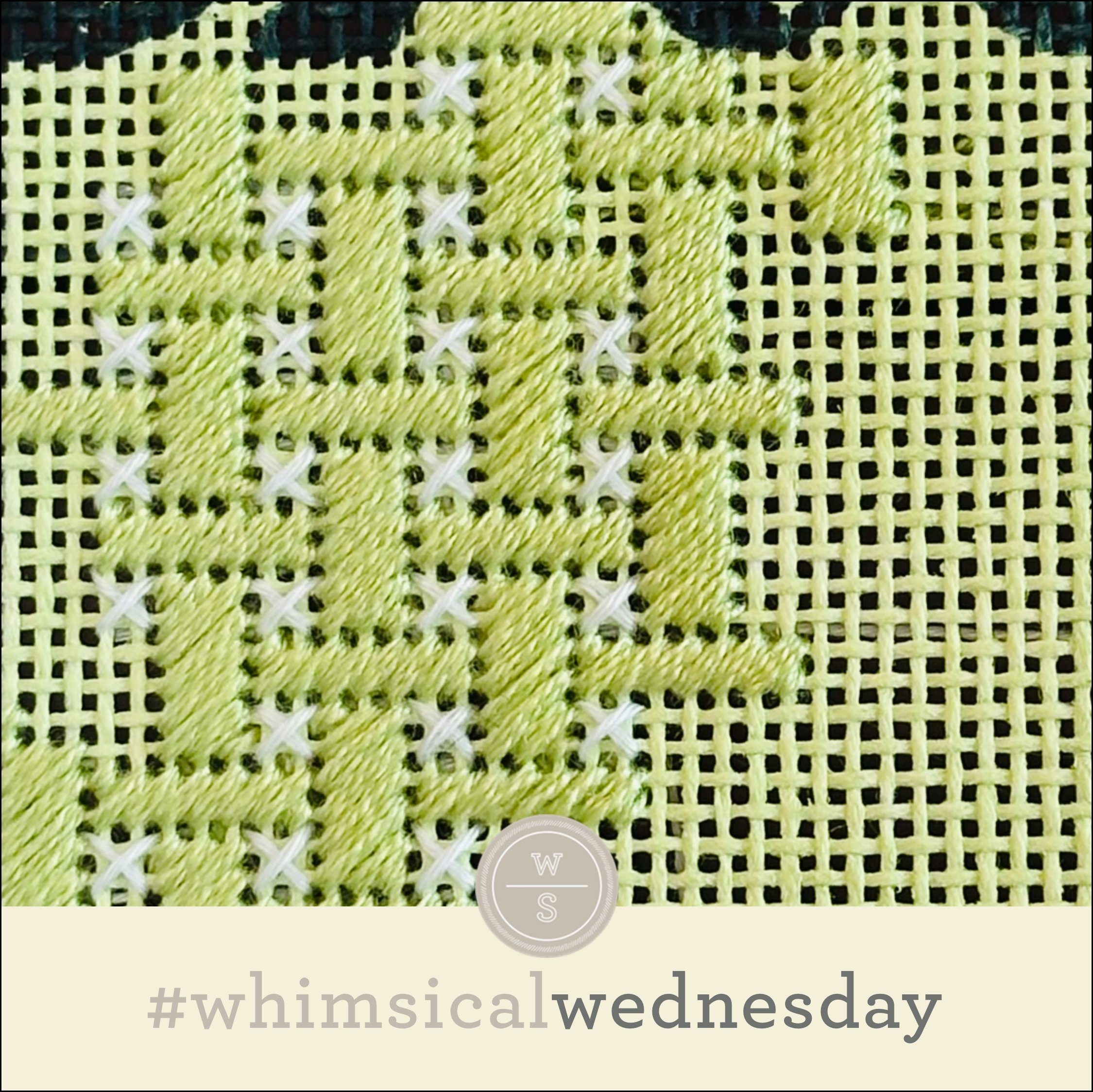Needlepointers are special. Therefore, their spouses must be as well. But when you forget a needlepoint husband is coming to pick up stitch and thread recommendations for their sick wife, panic sets in. Yet this scenario is what led to today’s stitch.
I knew I wanted to retain the border as it was painted and selected this stitch because it was perfect for 3X3 squares. As soon as I looked at the canvas again, I realized I had forgotten there were three colors and the stitch was designed for two colors. Husband was en route. I still needed to pull threads. So, the stitcher received an email with a message instructing her to do part of this stitch and basketweave for the white. I had no real sense of how it was going to look and was thrilled with how it turned out.
The stitched sample includes two shades of blue Splendor (yellow and gray lines), two strands of white Floche (turquoise lines), and light blue Radiance Mini (black lines), which, frankly, steals the show. I absolutely love the delicate pattern that emerges with the Radiance—such a lovely surprise.
This stitch is great for a background, blanket, clothing…anywhere you want to add some gingham! Changing the black lines to the same hues as the lines surrounding them will make it more subtle.
As you are auditioning stitches (from any stitch source), count the number of canvas threads on the diagram that match your mesh size. And there you have what an inch of the stitch will look like. Evaluate that against the area where you plan to use the stitch and make your final decision. If you start integrating this step into your stitch selection process, you may be surprised at how many stitches you think are large are much smaller than you realize.
By (sometimes) including this step in my own process, I find I am now integrating much longer stitches than I ever thought I would. I used to think a stitch six rows long was super big. I have very much changed my tune, which has helped me expand my creativity, especially for large-space stitches.
Today’s stitch diagram, along with all other #whimsicalwednesday and #smallspacesunday stitch diagrams, can also be found on a Pinterest board here. Be sure to follow whimsicalstitch.com on Facebook, Pinterest, Instagram, and Twitter.
If you like what you see on this blog, there's more. Mary’s Whimsical Stitches is a series of four books offering contemporary how-to collections of more than 200 stitches (in each volume) for all stitchers, regardless of skill level. All books include updated and sequenced diagrams from this blog, plus a collection of all-new stitches from private lessons and other class projects. Visit here to find a needlepoint retailer that carries my books.
New to needlepoint or looking for a refresher? Please download a handy how-to guide covering basic needlepoint stitches and stitch compensation techniques along with new top-line information on needlepoint materials and tools, how to handle threads, and other helpful needlepoint resources.
whimsicalstitch.com also sells Stitch Guides and Stitch Concepts for Melissa Shirley Designs, Zecca Designs, Sandra Gilmore, Purple Palm, Maggie, and Penny MacLeod, and many more. Click here to see the newest guides and click here to see the entire collection.
I hope you have the perfect spot for this stitch! Please enjoy! Have a wonderful #whimsicalwednesday!
A Note about Diagrams
I use color in diagrams to make them as clear as possible. The primary function of different colored lines is to illustrate a stitch sequence. For example, the layering of colors demonstrates you add them in that order. They can also provide ideas on integrating additional threads (one line for each color). Or, you can use the same thread for all color lines. That's where I encourage you to use your imagination for the space you are stitching!



